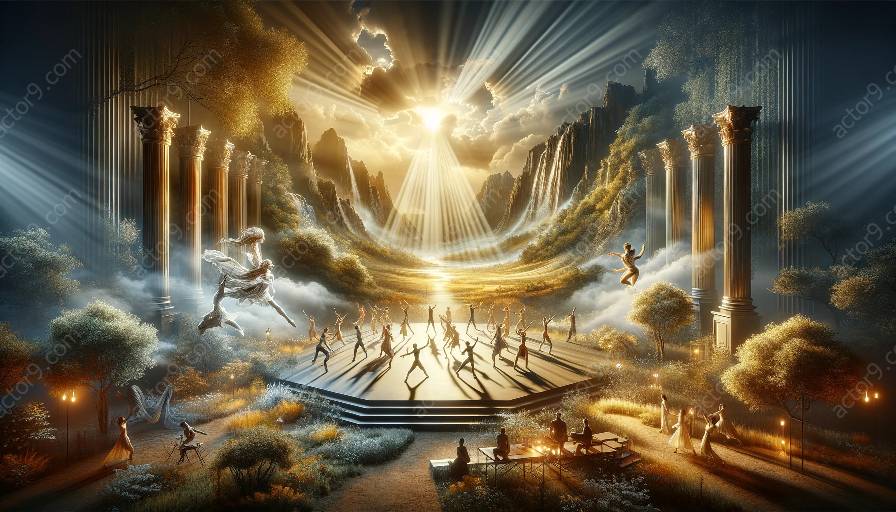Physical theatre is a performing art form that emphasizes the use of physical movement, gesture, and expression. It combines elements of drama, dance, and mime to convey stories and emotions to the audience. Lighting plays a crucial role in enhancing the theatrical experience in physical theatre, and its use has been influenced by historical and cultural factors.
Historical Influences:
Throughout history, the use of lighting in theatre has evolved significantly, and physical theatre is no exception. In ancient Greece, the birthplace of drama, performances took place in outdoor amphitheaters during the day without the use of artificial lighting. However, as theatre moved indoors during the Renaissance, the use of candles and oil lamps became popular.
The invention of gas lighting in the 19th century revolutionized theatrical lighting, providing a more reliable and controllable source of illumination. This technological advancement allowed for more creative and dynamic use of lighting in physical theatre, enabling directors to experiment with various lighting effects to heighten the dramatic impact of performances.
Cultural Influences:
Across different cultures, the use of lighting in physical theatre has been shaped by unique artistic traditions and practices. For example, in Asian physical theatre forms such as Kabuki and Noh, intricate lighting designs are used to create symbolic and mystical atmospheres that complement the stylized movements and expressions of the performers.
In contemporary physical theatre, the influence of popular culture and multimedia has prompted the integration of innovative lighting technologies, such as LED fixtures and projection mapping, to create immersive and visually stunning productions that captivate modern audiences.
The Role of Lighting in Physical Theatre:
Lighting serves multiple functions in physical theatre, including:
- Setting the Mood: Lighting design can establish the emotional tone and atmosphere of a physical theatre performance, enhancing the audience's engagement with the narrative and characters.
- Emphasizing Movement: By selectively illuminating performers and their movements, lighting can draw attention to key elements of the choreography and physicality, heightening the visual impact of the production.
- Creating Visual Composition: Strategic lighting can sculpt the space, create dramatic silhouettes, and frame the performance area, contributing to the overall aesthetic of the production.
- Evolving Narratives: Dynamic lighting changes can signify shifts in time, space, and thematic elements, aiding in the storytelling process and guiding the audience's interpretation.
By understanding the historical and cultural influences on the use of lighting in physical theatre, one can appreciate the evolving artistry and craftsmanship behind the mesmerizing visual landscapes that illuminate the physical stage.




































